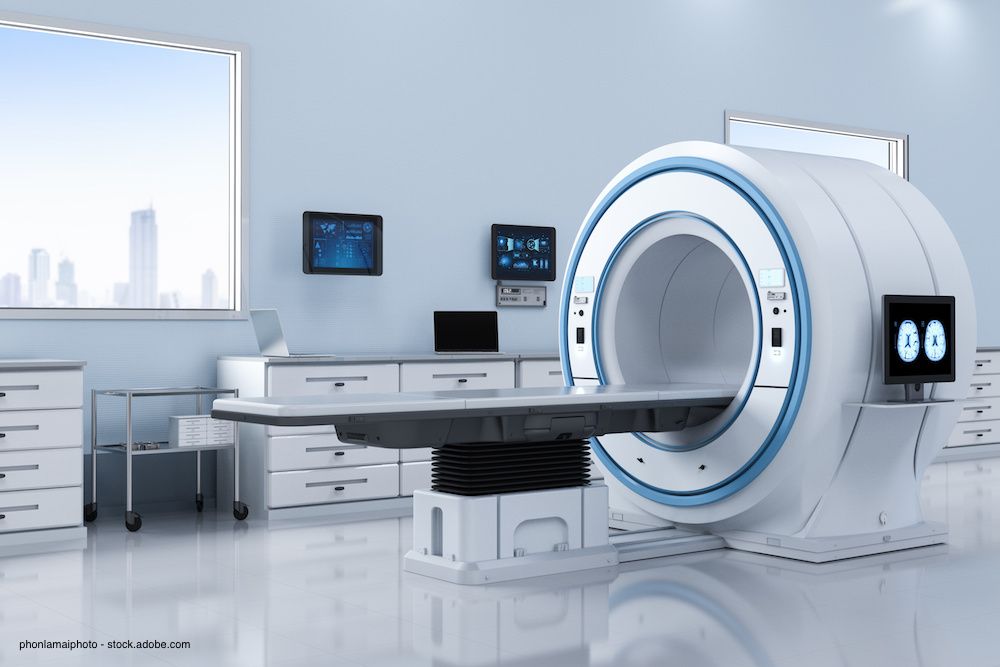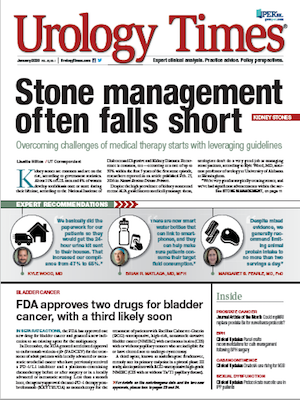Publication
Article
Urology Times Journal
Could mpMRI replace prostate Bx for surveillance protocols?
Author(s):
"Even in this selected cohort of men with very low-risk features, stable MRI score was not protective against disease progression during surveillance," writes Badar M. Mian, MD.
phonlamaiphoto - stock.adobe.com


“Journal Article of the Month” is a new Urology Times section in which Badar M. Mian, MD (left), offers perspective on noteworthy research in the peer-reviewed literature. Dr. Mian is professor of surgery in the division of urology at Albany Medical College, Albany, NY.
As the adoption of active surveillance protocols (AS) for low-risk prostate cancer has increased, focus has shifted toward reducing the morbidity of AS by using less invasive methods to reduce the number of biopsies. Due to its reported low false-negative rate, multiparametric MRI of the prostate has gained popularity for use prior to the initial diagnostic biopsy as well as subsequent surveillance biopsies. It has been suggested by some investigators that a negative or stable MRI could replace the surveillance biopsy in men on AS.
To address the question of prostate MRI as a substitute for biopsy during AS, Chesnut et al retrospectively reviewed their AS database to study the association between changes in the MRI score and disease progression on surveillance biopsy (European Urology Dec. 21, 2019 [Epub ahead of print]). Men with very low-risk or low-risk cancer were required to undergo an MRI and confirmatory re-biopsy before being qualified for enrollment in the AS program. If MRI was not performed prior to initial biopsy, it was completed prior to confirmatory biopsy. All confirmatory biopsies were MRI guided if a targetable lesion was identified.
Also by Dr. Mian: What do recent studies tell us about finasteride and PCa?
The authors identified 207 men between 2013 and 2016 who had undergone the required two MRIs and surveillance biopsy at 3 years. Patients had either very low-risk (71%) or low-risk (29%) prostate cancer (as defined by NCCN), with an average PSA of 4.4 ng/mL. Once enrolled, their AS protocol required surveillance MRI at 18 months and 3 years, with surveillance biopsy at 3 years. The median time on AS for patients who did not require definitive treatment was 4.1 years.
During AS biopsy, both MRI-targeted and systematic 14-core prostate biopsies were performed. Men with a negative MRI (no lesion with MRI score ≥3) underwent systematic 14-core biopsy. All men had Gleason grade group 1 (GG1) prostate cancer prior to enrollment, and disease progression was defined as the detection of GG2 or higher in the surveillance biopsy specimen.
Overall, 66 of 207 men (32%) were found to have disease progression to GG2 or higher at 3-year biopsy. Of the men with disease progression, 55 (83%) had GG2 disease, 10 (15%) had GG3, and one (1.5%) had GG4 prostate cancer. While an MRI score ≥ 3 was noted in 124 patients, 101 underwent targeted plus systematic biopsies. Of these, 39 (39%) were found to have GG2 or higher. Disease progression was identified by targeted biopsy alone in only four patients, by systematic biopsy alone in 17 patients, and by both biopsies in 18 patients.
Next: Increasing MRI score correlates with disease progression rateIncreasing MRI score correlates with disease progression rate
Among patients with an MRI score of ≥3 before the surveillance biopsy, 41% had GG2 or higher disease, while GG2 was noted in 15% of men with a negative MRI (p=.0002). Increasing MRI score of 3, 4, and 5 correlated with disease progression rate of 31%, 49%, and 75%, respectively.
In 132 men (64%) whose 3-year surveillance MRI score remained unchanged from the initial MRI, progression to GG2 was 31%, while an increase in the MRI score was associated with GG2 in 42%. In 62 men whose surveillance MRI score remained normal (score 0-2) or decreased to normal, only nine men (14.5%) showed progression to GG2 at 3-year biopsy. If the AS protocol had used “any increase in MRI score” as the trigger for biopsy, GG2 would be missed in 28% of men with normal baseline MRI and 64% of men with MRI score ≥3.
Read: Survival rates appear comparable for robotic, open cystectomy
Even in this selected cohort of men with very low-risk features, stable MRI score was not protective against disease progression during surveillance. The 3-year MRI and biopsy would have been the third MRI and third biopsy for these men. Still, 15% of men with negative MRI had GG2 disease and 25% of men with MRI score 5 had no or low-risk disease, and very few cancers were noted exclusively in the targeted biopsy. Despite the expertise of this single-center study group, this lack of correlation at both ends of the MRI spectrum with targeted biopsy results seems worse than what’s reported by many investigators.
Using the stability of MRI score over time to decide to omit the prostate biopsy would have missed nearly one-third of the GG2 cancers during AS, and performing target-only biopsies would have missed 44% of GG2 cancers. Except in select individuals who are at increased risk of biopsy-related complications, with significant comorbidities or short life expectancy, scheduled repeat prostate biopsy should remain an essential component of AS protocols.































